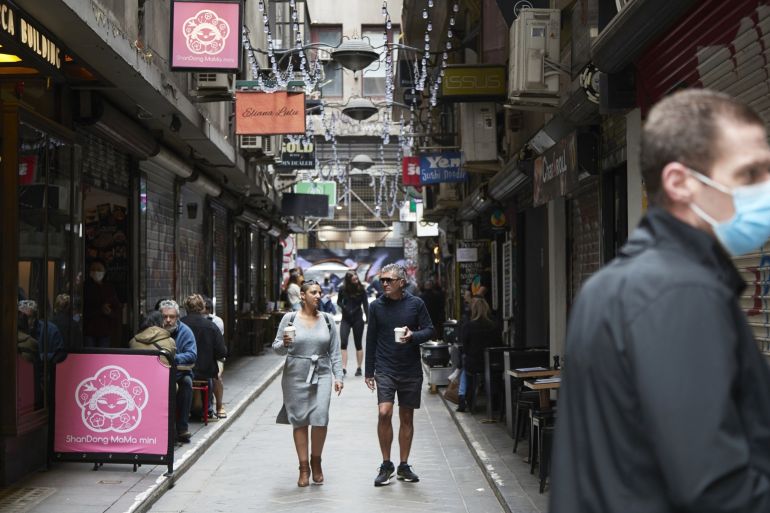Australia’s Q1 retail sales speed past forecasts
Retail sales jumped 1.6 percent in March to a record $33.6 billion Australian dollars ($23.9bn), topping forecasts of a 0.6 percent gain.

Australian retail sales easily sped past forecasts for a third straight month in March as spending built momentum that should help it weather this week’s rise in interest rates.
Data from the Australian Bureau of Statistics on Wednesday showed retail sales jumped 1.6 percent in March to a record $33.6 billion Australian dollars ($23.9bn), handily topping forecasts of a 0.6 percent gain.
Keep reading
list of 4 itemsLeila de Lima release urged after witnesses retract testimony
As Vietnam reopens, villagers seek more sustainable tourism
Hong Kong GDP falls more than expected as COVID curbs bite
That came hot on the heels of hefty gains in January and February and left sales up a stellar 9.4 percent on a year earlier. Some of that spending would have been eaten up by surging inflation, but it still points to an upbeat quarter for economic growth.
“Even allowing for a strong increase in retail prices, we estimate that volumes rose by a solid 1.5% q/q,” said Marcel Thieliant, a senior economist at Capital Economics.
“While falling consumer confidence amid soaring inflation and rising interest rates poses downside risks, we think that the still high savings rate will allow for further solid gains in spending over coming quarters.”
That resilience echoes the confidence of the Reserve Bank of Australia (RBA) that its first rate rise in a decade will not suddenly tip the economy into recession.
The central bank lifted rates by 25 basis points to 0.35 percent on Tuesday and flagged more to come as it restrains inflation.
Household debt
Australia’s four major banks have all increased their variable mortgage rates by 25 basis points, a burden for households that hold A$2 trillion in mortgage debt.
That rise will add around A$80 a month in payments to the average mortgage of A$600,000, and the pain is set to multiply as markets are wagering on a hike every month until Christmas.
Futures imply the RBA could hike to 0.75 percent in June and reach 2.75 percent by the end of the year.
RBA Governor Philip Lowe on Tuesday suggested 2.5 percent would be a more “normal” level for rates but was noncommittal on when, or if, that might be reached.
One positive for spending power is that households built up an extra $272bn worth of savings during the pandemic and have deposits worth a record $1.26 trillion.
Many are also well ahead on their mortgages with the median loan for owner-occupiers around 21 months ahead on payments.
Demand for mortgages has been running along well with new loans rising 1.6 percent in March to 33.6 billion Australian dollars, when analysts had looked for a drop of 1.0 percent.
Loans for housing investment hit a record high in the month as the market remained strong, at least outside of Sydney and Melbourne where prices have finally begun to cool.